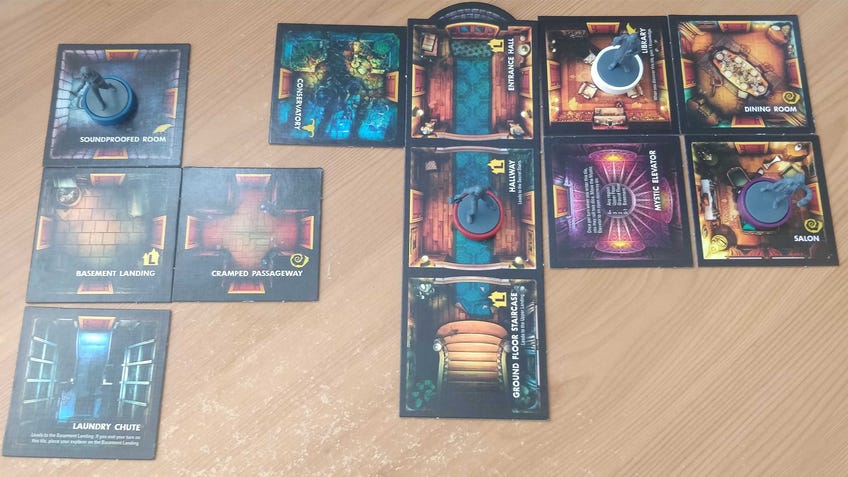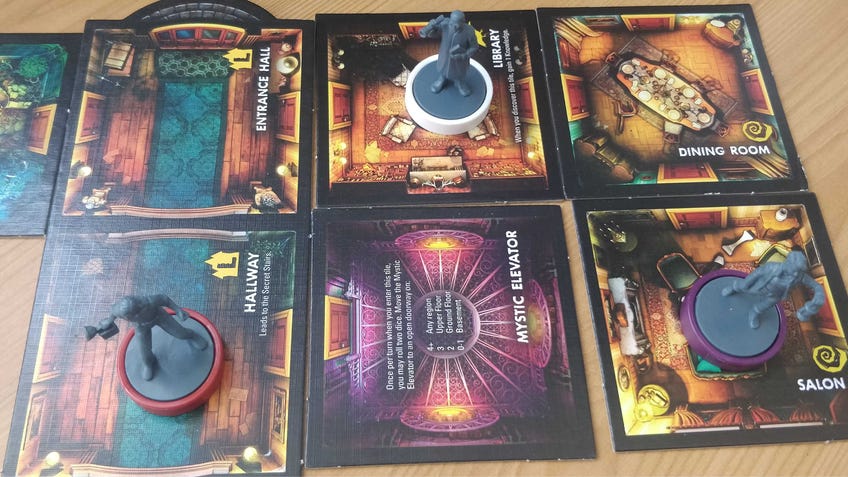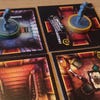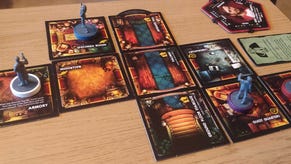Betrayal at House on the Hill: Third Edition review – Horror board game’s greatest and messiest hits
Hauntingly familiar.
If you don’t like Betrayal at House on the Hill, its new Third Edition is not going to change your mind.
Despite the myriad of changes featured in the horror board game’s latest version, it still provides much the same experience as the now decade-plus-old Second Edition. Players still control a roster of doomed characters with varied traits, they still move through a haunted house encountering spooky goings-on and they still roll a lot of dice. The roller-coaster gameplay of Betrayal won't appeal to everyone, but if you’ve always enjoyed the kind of silliness that Betrayal offers – or if you’re at least curious about it – then Third Edition provides the best possible version of that. (That isn’t an expansion, anyway – more on that in a bit.)
Betrayal at House on the Hill: Third Edition is a board game for horror lovers. It takes many of the tropes that horror fans are familiar with – a haunted house, a group of unsuspecting but plucky adventurers, ghosts, serial killers and more – and stuffs them all into one messy, charming package. The core gameplay of Betrayal is incredibly simple; players take turns to move their miniature across a series of interconnected tiles, drawing cards and rolling dice along the way, all whilst waiting for that fateful moment when one of them might turn against the rest as a traitor.
But Betrayal has never been about its core gameplay - the joy of the game comes from its atmosphere and stories. The board game is like a toy box of horror, providing players with everything they need to play-act their own spooky scenarios. How good those scenarios are really depends on which toys players take out of the box - specifically, the quality of the game’s various storylines, known as haunts – but Third Edition does a good job of pushing players in the right direction.
Betrayal is one of those board games that is exceptionally better when the players approach it in the right way.
The inclusion of scenario cards is not new to the Betrayal series, having made their debut in the Scooby-Doo-themed spin-off Betrayal at Mystery Mansion, but their inclusion here is appreciated. Not only do they add to the game’s ability to tell an overarching narrative by providing a starting point – which then feeds into the eventual haunt – they also make Betrayal an easier game to play right.
I don’t tend to support arguments that put the onus on players to experience a board game in a certain way, because it can often come off as subtle gatekeeping or putting others off playing because they’re not doing it ‘right’. However, Betrayal is one of those board games that is exceptionally better when the players approach it in the right way. Mostly, this means getting on-board with its spooky atmosphere and heavy emphasis on luck. It can also mean making certain choices, such as having fewer, shorter pauses in gameplay, as breaks can ruin immersion and simmer down the excitement. This happens more often in a game like Betrayal where new concepts are introduced in every playthrough, but can be mitigated by good rule-writing and layout design - which Third Edition certainly improves on compared to its predecessors. Another choice is avoiding replaying haunts. The inclusion of the scenario cards in Third Edition helps with both these choices by simplifying the haunt trigger process and attaching almost every haunt to a particular scenario card.
Player turns have been altered, ending whenever players discover a room, rather than when they draw a card – a rule also introduced in Betrayal at Mystery Mansion. Haunt rolls have also been adjusted to have players roll a die for each omen that’s been found, with five or more triggering the scenario – a change first featured in the Dungeons & Dragons-themed Betrayal at Baldur’s Gate. These changes serve to somewhat prevent haunts from occurring far too early in the game.
There are a whole host of minor improvements featured within Third Edition that make it a better experience than its predecessor.
I say “somewhat” because the system isn’t foolproof – the haunt happened relatively quickly in the first game I played – but it at least guarantees that a haunt isn’t going to trigger within the first two turns. This allows players time to immerse themselves in the story and atmosphere before you dig into the main course of the game. It also gives players more of a chance to find some decent gear and trait improvements before they start doing more dangerous stuff like combat, making the competition a bit more balanced.
There are a whole host of minor improvements featured within Third Edition that make it a better experience than its predecessor. The inclusion of a ‘reluctant traitor’ option, which enables any player who finds themselves burdened with the traitor role to pass it to someone more willing. Certain event cards leading to specific haunts, should the players want to roll for them. Tiles featuring trait increases granting them to the player that discovered them, rather than to anyone who ends their turn there. Not to mention many cosmetic changes such as new artwork, better-quality miniatures, easier-to-use player boards and a more diverse roster of characters.
All these alterations are excellent additions to the core Betrayal formula and collectively ensure that Third Edition serves as a greatest hits collection for the series. However, they don’t fix the fundamental issues that will undoubtedly be a major turn-off for some players. Though all the haunts featured in Betrayal’s third edition are new – some are sequels to haunts found in the previous edition, such as the return of Crimson Jack and the Witches – having played several and read through the remainder of the 50 included, the game still has its fair share of duds. The handful of haunts I experienced firsthand while writing this review were fairly average. None of them have been as miserably simple as the ‘kill these spiders’ kind - though there are a few of those featured in Third Edition - but they’ve not reached the kind of creative heights found in the Widow’s Walk expansion released for Betrayal’s previous edition.
The themes for most of the haunts veer away from the typical horror tropes that the Second Edition relied on a little too much.
There are certainly some interesting-looking haunts found within the Traitor’s Tome and Secrets of Survival books, including most of the co-op style haunts that have no traitor - which were previously almost always the most boring kind. Unfortunately, the free-for-all haunts - where all players are working against each other - appear to be quite dull, and many of the traitor-versus-heroes haunts feel like they’d be a lot more enjoyable for one side than the other. Nevertheless, at least the themes for most of the haunts veer away from the typical horror tropes that the Second Edition relied on a little too much. Instead, the haunts in Third Edition bounce from incredibly silly, yet charming – including clear homages to Jaws and The Lord of the Rings - to ever-so-slightly creepy, like someone stealing people’s body parts, but always offering something unexpected.

It’s still a shame that the writing team didn’t experiment more and create something closer to Widow’s Walk, as the expansion took the concept of Betrayal to so many weird and wonderful places. Though it still had plenty of haunts that were outright unbalanced, at least they experimented with gameplay mechanics and concepts in a way that made them memorable. After all, the best kind of B-movie horror doesn’t necessarily focus on trying to tell a cohesive story, but on providing its audience with as many fun moments as possible. I wish that Betrayal: Third Edition leaned into this approach more than it does, rather than taking the safer route with its themes and gameplay mechanics. On the other hand, I understand the need to offer a more accessible and conservative experience in your core release. Hopefully Avalon Hill will give Widow’s Walk the remake treatment to go alongside this new and improved version of Betrayal.
Regardless, Third Edition is undoubtedly the best core entry in the series. The quality-of-life changes make it a smoother and more accessible experience that has plenty of genuine love for the series sprinkled all over it. If you love Betrayal at House on the Hill, you’ll love Third Edition. If you want to experience Betrayal, then play Third Edition. Just be sure to give the Widow’s Walk expansion for the Second Edition a try, if you can.
Buy Betrayal at House on the Hill: Third Edition on Amazon UK. The game will be available in the US in August 2022.









